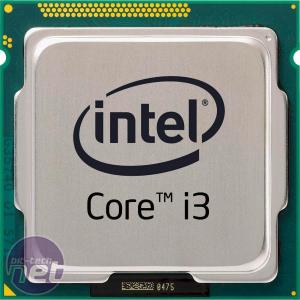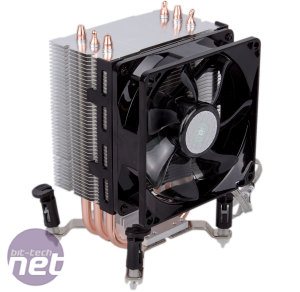
Affordable All-Rounder
With the current iterations of the two major consoles now well into their respective lifecycles, pricing for basic models is now far cheaper than it once was. Sadly, this isn't the case for PC gaming, especially in the UK where the pound's relatively weak performance of late has driven up the cost of nearly all hardware. As a result, attempting to build a PC that has near price parity to consoles is not the aim here – you'd end up making too many unwanted sacrifices and your system would be lacking in performance, features, aesthetics and longevity. Instead, the Affordable All-Rounder aims to be just that: price-conscious, but still capable of serving your everyday PC needs and even some more intensive tasks not just now but in years to come. This system will also smash the current consoles out of the water when it comes to the image quality and frame rates it can achieve in games, and gives you all the flexibility and upgrade potential of the PC ecosystem as well.| Product | UK price (inc VAT) | US price (ex tax) | |
| CPU | Intel Core i3-6100 | £115 | $105 |
| Motherboard | MSI H170A PC Mate | £95 | $105 |
| Memory | 8GB (2 x 4GB) 2,133MHz DDR4 | £55 | $55 |
| Graphics card | Nvidia GeForce GTX 1050 Ti 4GB | £145 | $145 |
| PSU | EVGA 450B | £40 | $40 |
| CPU cooler | Cooler Master Hyper TX3i | £25 | N/A |
| Cooler Master Hyper TX3 | N/A | $25 | |
| Storage | 240GB SATA 6Gbps SSD | £60 | $65 |
| Case | NZXT Source 340 | £65 | $70 |
| Total price | £600 | $610 |
While much has changed in the world of hardware since our last Buyer's Guide, in some respects not a lot has. Our Affordable All-Rounder CPU suggestion is still an Intel Core i3 CPU, only now it's part of the latest family, Skylake, specifically the Core i3-6100. AMD CPUs are sorely lacking in single-threaded performance, and while some processors with more cores compete with the Core i3-6100 on price, such as the six-core FX 6350, Intel's dual-core Core i3 CPUs have Hyper-Threading, allowing them to run four concurrent threads at once. This, plus the speed of the Skylake cores, means it has more speed for feeding GPUs. There are pricier Core i3 CPUs, but you only get a little more cache and 100-200MHz more speed from them – they're not worth the extra.
 Another benefit of using an Intel Skylake CPU is the additional features from the chipset – AMD's AM3+ platform was still being used in 2013 and is in desperate need of a feature bump. We've opted for H170 instead of Z170 since Z170 is primarily for CPUs with unlocked multipliers designed for overclocking – this doesn't apply in our case. ATX H170 boards start at around £70, but if you can stretch to about £100 you'll have options with more features. We don't typically review H170 motherboards, so specific advice here is hard to give – pick based on the aesthetics and features you need – although MSI and Asus currently have the best EFI menus if you're keen to do a bit of tinkering.
Another benefit of using an Intel Skylake CPU is the additional features from the chipset – AMD's AM3+ platform was still being used in 2013 and is in desperate need of a feature bump. We've opted for H170 instead of Z170 since Z170 is primarily for CPUs with unlocked multipliers designed for overclocking – this doesn't apply in our case. ATX H170 boards start at around £70, but if you can stretch to about £100 you'll have options with more features. We don't typically review H170 motherboards, so specific advice here is hard to give – pick based on the aesthetics and features you need – although MSI and Asus currently have the best EFI menus if you're keen to do a bit of tinkering.8GB of DDR4 rounds out the core specifications, and there's no need to splash out on fancy heatspreaders or excessive speeds (H170 is limited to 2,133MHz). 8GB shouldn't be a bottleneck, but your motherboard will have two spare slots in case you need to add extra capacity in the future.
We aimed for a GPU below £150 to stop the budget spiralling too high, and your best bet here is easily Nvidia's GTX 1050 Ti. It offers excellent performance in games at 1080p with high or even sometimes ultra settings, with substantially more performance than AMD's RX 460 and a 4GB frame buffer compared to the GTX 1050's 2GB one making it a much safer bet for long-term use. We've only personally reviewed the MSI Gaming X variant, which is more expensive than what you should pay for this GPU – there's a decent selection for less than £150 though. If your budget can stretch, however, the AMD RX 470 4GB is perhaps the best bang for buck card on the market starting at £170 and offering performance that nips at the heels of the RX 480 4GB and GTX 1060 6GB. In that case, Sapphire's Nitro OC card would make a fine choice.
A 450W PSU will offer more than enough wattage and even cover future GPU upgrades too. 80 Plus Bronze rated tends to be our minimum recommendation efficiency wise, and there's no need to go modular, especially with the PSU cover on the case we've selected. Just be sure not to go with no-name companies or dodgy Chinese brands – you might save a few quid but there's a genuine risk of damage to your components thanks to shoddy electronics.
 The CPU cooler of choice is the venerable Cooler Master TX3i. It will cope easily with the 51W Core i3 processor and will be a big upgrade over the stock cooler in temperatures and noise.
The CPU cooler of choice is the venerable Cooler Master TX3i. It will cope easily with the 51W Core i3 processor and will be a big upgrade over the stock cooler in temperatures and noise.We now consider mechanical hard drives to be unacceptable as a primary storage drive, and we'll also make no apology for excluding optical drives from our systems. An SSD is a must, and 256GB is much better than 128GB in terms of value and speed and also given the size of modern games. You should really just aim for the cheapest 256GB (or thereabouts) SSD you can get. Our setup allows you to easily add bulk storage mechanical drives at a later date.
The case of choice is the excellent NZXT S340. It looks fantastic and is very easy to work with, making it great especially for novices and first-time builders. There's lots of upgrade potential too.
Even Cheaper?
With hardware costs approaching £600 for this build, a Windows license could see costs close to £700, and thus many will be wondering if the term 'Affordable' is really appropriate. We stand by the choices above for a solid discrete GPU system that's designed to last, but it's certainly possible to get into PC gaming for less.For example, another option would be to get one of AMD's latest APUs, which combine CPU duties with onboard graphics processing suitable for playing modern games at console-level settings and easily capable of handling eSports titles. The £125 A10-7870K Black Edition looks to be the best bet, and it comes with a new quiet cooler. Pair that with an FM2+ motherboard and 8GB of 2,133MHz DDR3 for about £120 combined and you're now looking at roughly £400 in hardware costs (no graphics card or cooler needed), keeping the overall budget below £500 when Windows is factored in.
You can go even cheaper than this, of course, but then you're rapidly heading towards hardware that will show its age much quicker – you still want a system to be proud of and that can be upgraded easily in the future.

MSI MPG Velox 100R Chassis Review
October 14 2021 | 15:04








Want to comment? Please log in.